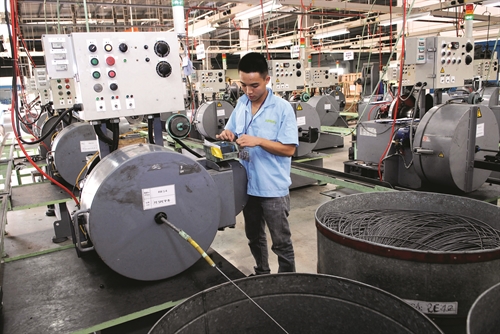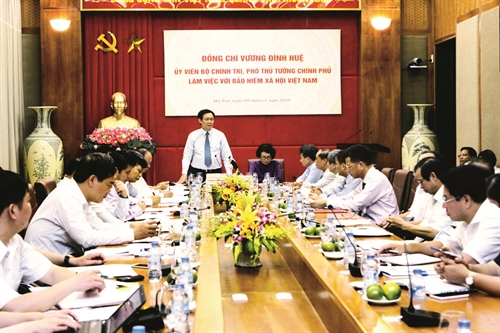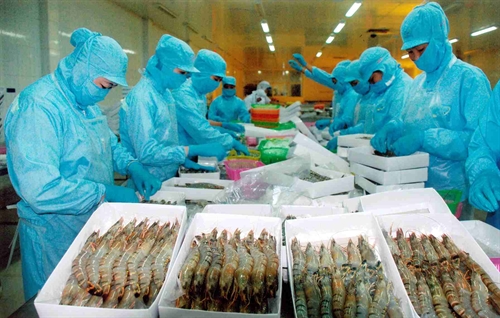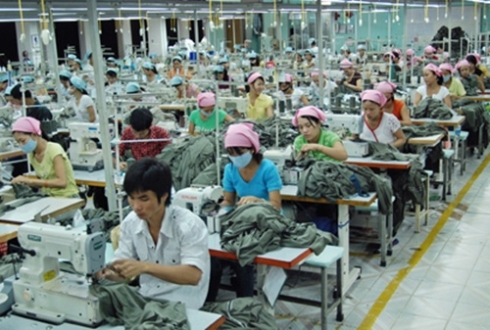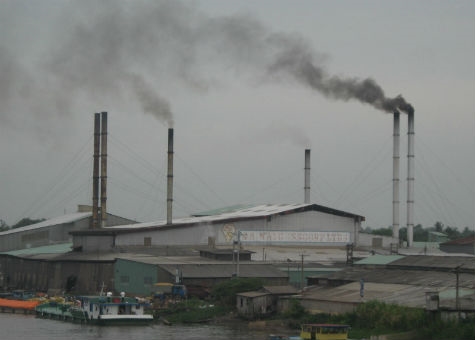The Trans-Pacific Partnership (TPP) Agreement was officially concluded on February 4, 2016, by 12 countries, including Australia, Brunei, Canada, Chile, Japan, Malaysia, Mexico, New Zealand, Peru, Singapore, the United States and Vietnam.
The issue of intellectual property (IP) is dealt with in Chapter 18 and the annexes of the TPP, which is believed to pose many challenges for Vietnam in terms of both legal aspects and IPR enforcement. This article analyzes some of these challenges.
Le Thi Nam Giang, LL.D
Lecturer, Ho Chi Minh City University of Law
Obligation to join IP treaties
Following the approach employed by the Agreement on Trade-Related Aspects of Intellectual Property Rights (TRIPS Agreement)[1], the TPP Agreement requires its Parties to accede to or ratify a number of important IP treaties. Based on the time the Parties have to perform this obligation, the treaties listed in the TPP Agreement are divided into two groups. The first group consists of the treaties which the Parties affirm they have ratified or acceded to, namely the Patent Cooperation Treaty (PCT 1979), the Paris Convention for the Protection of Industrial Property (1967), and the Berne Convention for the Protection of Literary and Artistic Works (1971). This requirement is higher than that of the TRIPS Agreement as the latter only requires compliance with the economic contents of the above treaties. Vietnam had joined these three treaties before it participated in the TPP negotiations. The second group comprises the treaties which the Parties must ratify or accede to by the date the TPP Agreement becomes effective for each Party, taking into account the transitional period applied to some Parties. These treaties include (i) the Protocol Relating to the Madrid Agreement Concerning the International Registration of Marks (1989); the Budapest Treaty on the International Recognition of the Deposit of Microorganisms for the Purposes of Patent Procedure (1977), as amended in 1980; the International Convention for the Protection of New Varieties of Plants (1991); the Singapore Treaty on the Law of Trademarks (2006); the WIPO Copyright Treaty (WCT 1996); and the WIPO Performances and Phonograms Treaty (WPPT 1996).
Among the above treaties, Vietnam has not yet joined the Budapest Treaty, the Singapore Treaty on the Law of Trademarks, the WCT and the WPPT. The time limit for Vietnam to join the Budapest Treaty is two years and that for the WPPT is three years.
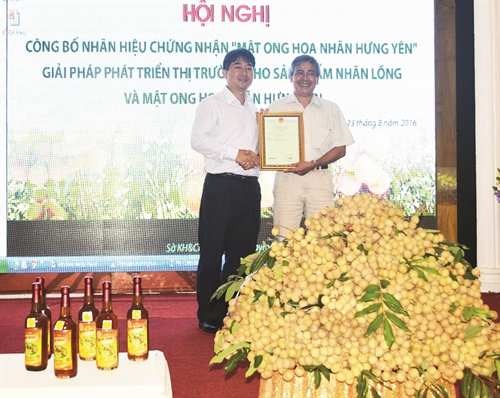 |
| The National Office of Intellectual Property grants the protection title to Hung Yen province’s longan blossom honey __Photo: Mai Ngoan/VNA |
Requirements on transparency in disclosure of IP information
Requirements on transparency in the IP field are set out in Article 18.9 and some other articles of the TPP Agreement, such as Article 18.73 and Article 18.45. Accordingly, each Party must endeavor to make available on the Internet its laws, regulations, procedures and administrative rulings of general application concerning the protection and enforcement of IPRs. Each Party must, subject to its law, endeavor to make available on the Internet information that it makes public concerning applications for trademarks, geographical indications, industrial designs, patents and plant variety rights. Each Party must also make available on the Internet information that it makes public concerning registered or granted trademarks, geographical indications, industrial designs, patents and plant variety rights, sufficient to enable the public to become acquainted with those registered or granted rights.
Current Vietnamese law basically satisfies the TPP requirement on publication of legal documents on the Internet. The 2015 Law on Promulgation of Legal Documents stipulates that all legal documents, excluding those containing state secrets, shall be published in the print and electronic Cong Bao (Official Gazette) (Article 150) and in the national legal database (Article 157). The 2006 Law on Information Technology also states in Article 28(2) that the websites of state agencies must publish their specialized legal documents and relevant regulations and laws, processes and administrative procedures implemented by their affiliated units, names of persons responsible for implementing these processes and procedures and time limits for completion of administrative procedures. Other legal documents such as Decree No. 64/2007/ND-CP on application of information technology in activities of state agencies and Decree No. 52/2015/ND-CP on the national legal database also contain clear provisions on this issue.
At present in Vietnam, information on applications for registration of industrial property objects, and information on titles of protection and other information relating to industrial property rights such as registration of industrial property rights assignment contracts and industrial property rights licensing contracts, has been published in the Industrial Property Official Gazette and the website of the National Office of Intellectual Property of Vietnam (NOIP). In addition, the NOIP has recently launched on a pilot basis a Library of Patents of Vietnam database, a very useful source of information on inventive and innovative activities in Vietnam. Information on copyright and related rights registration has been also made available on the website of the Copyright Office of Vietnam. Hence, Vietnamese law has sufficient provisions ensuring the performance of the obligation to disclose IP information. The problems to be addressed are that the information systems of the NOIP and Copyright Office of Vietnam are frequently overloaded or suspended from operation and that their databases are inadequate, failing to meet the needs of users.
In addition, regarding the obligation to disclose information on specific industrial property objects like patents, marks and geographical indications, Vietnamese law still has some unsuitable provisions. For instance, according to Article 18.45 of the TPP Agreement, for published patent applications and granted patents, each Party must make available to the public at least the following information, to the extent that such information is in the possession of the competent authorities and is generated on, or after, the date of the entry into force of this Agreement for that Party: (a) search and examination results, including details of, or information related to, relevant prior art searches; (b) as appropriate, non-confidential communications from applicants; and (c) patent and non-patent related literature citations submitted by applicants and relevant third parties. Regarding the disclosure of patent information, Circular No. 01/2007/TT-BKHCN[2] provides details of information to be disclosed on patent applications, covering information relating to valid applications, including split-up applications published on the Industrial Property Official Gazette, including information relating to valid applications’ format as stated in notices of acceptance of valid applications, information relating to valid applications (transfer of applications, splitting up of applications, serial numbers of original patent applications, etc.); summaries of inventions accompanied by drawings (if any) and so on. This Circular also states that everybody may access detailed information on the nature of the objects stated in the applications published in the Industrial Property Official Gazette or request the NOIP to supply such information and is liable to pay an information supply fee under regulations.
Compared to the TPP Agreement provisions on disclosure of patent information, it can be said that Vietnamese law lacks specific provisions on the obligation to disclose information in an adequate and detailed manner as required in Article 18.45 of the TPP Agreement, especially information mentioned at Point a of the Article. Meeting this requirement of the TPP Agreement is truly a challenge for the IP state management agencies but will bring about practical benefits to inventors and the public.
Expansion of protected IP objects, scope of protection and term of protection of some IP objects
Regarding marks, Article 18.18 of the TPP Agreement states that no Party shall require, as a condition of registration, that a sign be visually perceptible, nor shall a Party deny registration of a trademark only on the ground that the sign of which it is composed is a sound. Additionally, each Party shall make best efforts to register scent marks. Meanwhile, Article 72 of Vietnam’s IP Law[3] requires one of the conditions for a mark to be protected in Vietnam to be composed of a visible sign in the form of letter, wording, drawing or image, including three-dimensional image or a combination of these elements, represented in one or more colors.” Current Vietnamese law does not yet protect sound and scent marks.
To implement the TPP commitments, Vietnamese IP law needs to be revised toward expanding the scope of protection to sound and scent marks. This expansion would lead to a series of legal changes, especially provisions on the assessment of the distinctiveness of scent marks and sound marks in the substantive examination for grant of titles of protection as well as in the determination of infringements upon these marks. Protection of scent marks and sound marks also poses challenges for the IPRs enforcement agencies in preparing their manpower as the assessment of the similarity or identity of such marks for identifying infringements is very complicated.
Regarding patents, Article 18.37 of the TPP Agreement requires each Party to confirm that patents are available for inventions claimed as at least one of the following: new uses of a known product, new methods of using a known product, or new processes of using a known product. These provisions aim for higher protection of patents in the health sector, especially for pharmaceuticals and methods of disease diagnosis and treatment. However, the TPP Agreement permits its Parties to select one of these ways of protection.
Current Vietnamese law does not provide the protection as inventions of new uses of a known product. However, it can protect new methods of using a known product or new processes of using a known product if such methods or processes are novel, involve an inventive step and are susceptible to industrial application as prescribed by Vietnamese law. Yet, Article 59 of Vietnam’s IP Law excludes the protection as inventions of methods of preventing, diagnosing and treating human and animal diseases. This exclusion aligns with the TPP Agreement.
Regarding industrial designs, Article 18.55 of the TPP Agreement states that each Party must ensure adequate and effective protection of industrial designs and also confirm that protection for industrial designs is available for designs: (a) embodied in a part of an article; or, alternatively, (b) having a particular regard, where appropriate, to a part of an article in the context of the article as a whole.
Concerning this issue, current Vietnamese law grants protection for industrial designs that are outer shapes of articles which are novel, inventive and susceptible to industrial application. In reality, a part of an article, which is detachable, may also have its industrial design protected under Vietnamese law. However, Vietnamese law needs to make clear whether an industrial design which is embodied in a part of an article but is not a detachable part of the article can be protected.
The TPP Agreement also provides the term of protection for some IP objects longer than those established by Vietnamese law and the TRIPS Agreement. Under the TPP Agreement, the term of protection of a work, performance or phonogram must not be shorter than the lifetime of the author and 70 years after his or her death. This term under Vietnamese law and the TRIPS Agreement is the whole life of the author and 50 years after his or her death. As for undisclosed test or other data for agricultural chemical products, the TPP Agreement requires the Parties to set a term of protection of at least 10 years. Under Vietnamese law, this term is five years counting from the date the applicant is granted a license. Vietnam has a grace period of five years to fulfill its obligation under the TPP Agreement regarding the protection of undisclosed test and other data for agricultural chemical products.
Adjustment of validity terms of patents
Under Article 18.46 of the TPP Agreement, each Party must make best efforts to process patent applications in an efficient and timely manner, with a view to avoiding unreasonable or unnecessary delays. If there are unreasonable delays in a Party’s issuance of patents, that Party must provide the means to, and at the request of the patent owner, adjust the term of the patent to compensate for such delays. An unreasonable delay at least includes a delay in the issuance of a patent of more than five years from the date of filing of the application in the territory of the Party, or three years after a request for examination of the application has been made, whichever is later. However, a Party may exclude from the determination of such delays periods of time that do not occur during the processing or the examination of the patent application by the granting authority; periods of time that are not directly attributable to the granting authority; as well as periods of time that are attributable to the patent applicant. Particularly for a pharmaceutical product, Article 18.48 of the TPP Agreement requires each Party to make available an adjustment of the patent term to compensate the patent owner for unreasonable curtailment of the effective patent term as a result of the marketing approval process. This provision requires appropriate supplementation of Vietnamese law and the NOIP to stick to the time limit for the examination and grant of patents.
Conclusions
The above analyses show that a number of IP commitments in the TPP Agreement are higher than the provisions of current Vietnamese law, even higher than those of the TRIPS Agreement. The developed countries, in the process of negotiation on free trade agreements, tend to strike out agreements on IPRs protection which are higher and more adequate than the WTO regulations in the TRIPS Agreement. Therefore, enforcement of IP provisions of the TPP Agreement will require Vietnam to revise its IP law and to raise the effectiveness of activities of IPRs enforcement agencies. The country needs also to upgrade its information infrastructure to serve the registration of IPRs and provision of industrial property information.-


